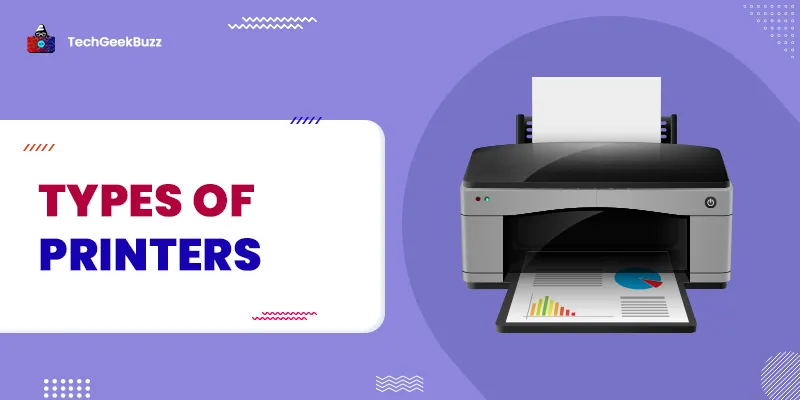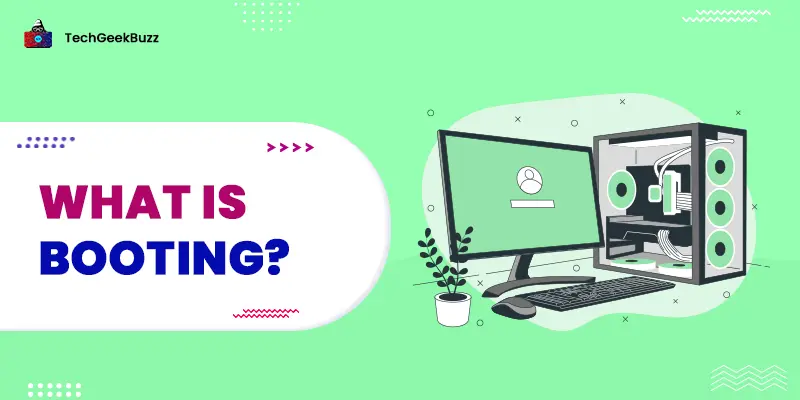Printers enable converting digital information into concrete forms, becoming an essential tool in our everyday life. They have developed greatly to meet various demands and uses, including printing business papers, vivid photos, and even sophisticated three-dimensional things.
Understanding different types of printers is crucial for choosing the one that best meets your needs. A variety of types are available, from the traditional impact printers that formerly ruled the market to the cutting-edge non-impact printers of the digital age.
This blog post will walk you through the different types of printers accessible now with their distinctive technology and features.
What is a Printer?
A printer is among the output devices that create hard copies of digital files such as documents, photos, or other information from a computer or other electronic device. It is a necessary instrument for printing digital information on paper or other physical medium. It translates digital information into readable text or images using a variety of printing processes.
When a user transmits a file or a picture from their computer or device to a printer, it analyses the information and creates a physical copy on paper or other materials.
Printers come in a variety of sizes, speeds, and capacities with a range of features to meet different printing requirements. They are connected to a computer based on their types and the available ports.
Here are some ways to connect printers to a computer:
- USB Connection: The majority of present-day printers link to computers using a USB (Universal Serial Bus) connection. It involves establishing a connection between the ports of a computer and the printer via a USB cable.
- Wi-Fi or Wireless Connection: Nowadays, many printers have wireless connectivity, enabling them to connect with a computer over a Wi-Fi network. It is essential for a computer and a printer to connect to the same WiFi network.
- Ethernet Connection: Printers with ethernet ports can be connected to a computer using an ethernet cable.
- Bluetooth Connection: Some printers include Bluetooth connection, which enables wireless pairing with a computer or mobile device. This is particularly helpful for printing on the go with cellphones and tablets.
Types of Printers
Impact printers and non-impact printers are the two primary types of printers that may be roughly divided depending on their printing method. Each kind uses different techniques to transfer ink or produce pictures on paper, and each has its own benefits and uses.
1. Impact Printers
Impact printers transfer ink onto paper using a mechanical mechanism. They were among the first varieties of printers. In this digital era, non-impact printers have taken their place. However, they are still used in some situations when multipart forms, carbon copies, or a requirement for durability are present.
These printers employ a print head with pins or other striking components that physically strike an ink-soaked ribbon against the paper to create an imprint. Printing is produced when the impact makes visible text and pictures on the paper.
Impact printers are further categorized into two types – Line and Character Printers.
1. Line Printers
Line printers print a complete line of text at once. In order to create a line of characters in a single pass, they use a line of hammers or pins to hit an inked ribbon on the paper.
These printers are ideal for activities that call for quick and continuous output thanks to their printing technique, which enables them to print at high speeds.
Types of Line Printers
1. Chain Printers
These printers leverage a revolving chain with characters or pins placed on it. The chain has a set of characters or pins in a predetermined order. When a particular character has to be printed, the chain rotates to place the requested character in the printing position. The relevant character is then produced on the paper by striking the chosen character on an inked ribbon.
2. Drum Printers
Drum printers work on a drum that has characters or pins attached all around it. The drum spins to place the required character in the printing position when a particular character has to be printed. The chosen character is then used to generate the appropriate character on the paper by striking it against an inked ribbon.
2. Character Printers
One character is printed at a time using character printers, sometimes called serial printers or serial impact printers. They employ a single print head with a series of pins that strike an inked ribbon to print distinct characters consecutively on the paper. Although slower than line printers, character printers have a wider range of character spacing and font selections.
Types of Character Printers
1. Daisy Wheel Printers
Daisy wheel printers were frequently utilized in the past to produce excellent text documents. Their printing technique, which consists of a spherical disc with molded letters or pins on its petals and resembles a daisy flower, gave rise to their name. The "daisy wheel" disc, which spins to place the required character in the printing location, is positioned on a print head.
2. Dot Matrix Printers
Dot matrix printers produce characters and graphics on paper using a pin matrix. They were once commonly used for printing text and simple images, and although non-impact printers have mostly supplanted them, they are still employed in a few specialized fields.
2. Non-Impact Printers
Non-impact printers are a particular kind of printer where the printing mechanism does not make direct touch with the paper. Non-impact printers employ various techniques to produce characters and pictures without physically contacting the paper, as opposed to impact printers, which use physical force to transfer ink onto paper.
In comparison to impact printers, non-impact printers are typically quicker, quieter, and able to produce prints of greater quality.
The following are the types of non-impact printers:
1. Inkjet Printers
An inkjet printer prints text and images by firing small droplets of ink into the paper. They are among the most generally used printer kinds and are frequently used in homes and workplaces for various printing activities, such as papers, photographs, and graphics.
Ink is discharged onto the paper by small nozzles in inkjet printers. To produce characters and pictures, the ink droplets are carefully managed. Ink is applied to the paper in the appropriate patterns by the print head moving back and forth across the page.
2. Laser Printers
A laser printer employs laser technology to produce prints on paper that are of a high caliber. They are often used in workplaces, enterprises, and households for a range of printing activities, including text documents, graphics, and high-resolution photographs.
Laser printers function by applying an electrostatic picture to a photosensitive drum or belt using a laser beam. Static electricity is then applied to the drum or belt, attracting the powdered ink known as toner. Next, the toner is moved from the drum or belt to the paper and fused to it with the use of heat and pressure. The final print is produced on paper using this procedure.
3. Thermal Printers
A thermal printer utilizes heat to create pictures on paper that has been specifically coated. They are frequently used for many different purposes, such as printing tickets, labels, and receipts.
Because thermal printing is a quick and dependable printing technique, thermal printers are common in a variety of industries, including retail, logistics, healthcare, and others.
Conclusion
There are many options available in the world of printers to meet different printing requirements and purposes. You can pick the best solution based on your particular requirements and preferences because each type of printer has its own distinct capabilities and uses.
The printing industry will probably develop more as technology advances, providing even more creative answers to satisfy the ever-changing digital era demands.
We hope you found this article interesting and enlightening.
People are also reading:


![What is an Assembler? [Definition, Working, & Types]](/media/new_post_images/What_is_Assembler.jpg)
![What is I/O? [Types, Examples, & Methods]](/media/new_post_images/What_is_I_O.webp)

Leave a Comment on this Post